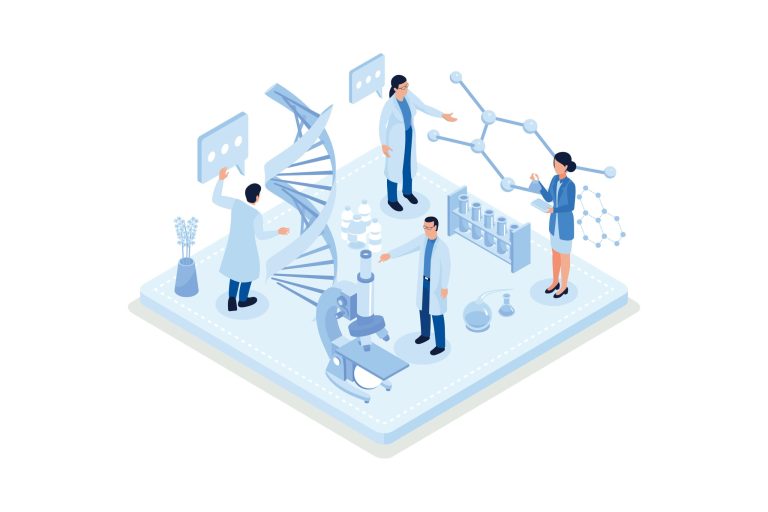The Ultimate Guide to Preventative Care: Taking Control of Your Health
What if you could address a health problem before it even starts? Imagine a future where you feel vibrant, energetic, and resilient, not because of a miracle cure, but because you made conscious choices today. This is the fundamental promise of preventative healthcare.
It represents a powerful shift in perspective from the traditional model of treating sickness to a proactive approach of cultivating wellness. Instead of waiting for symptoms to appear, you actively take steps to maintain your health and prevent disease from taking hold. True preventative care is about being the architect of your own long-term health, building a strong foundation for a longer, more fulfilling life.
This approach empowers you to move beyond being a passive recipient of medical care. It puts you in the driver’s seat, equipped with the knowledge and tools to make informed decisions that will pay dividends for decades to come. It’s an investment in your most valuable asset: your future self.

Why Should You Care About Preventative Health?
Thinking about prevention might seem less urgent than dealing with an immediate illness, but its long-term impact is far more profound. Embracing a preventative mindset is one of the most effective strategies for increasing not just your lifespan, but also your ‘healthspan’, the years you live in good health.
Early detection of conditions like high blood pressure, certain cancers, and diabetes can dramatically alter their course. When caught in the initial stages, these diseases are often far more manageable and treatable, leading to better outcomes and a higher quality of life. This proactive stance helps you avoid the physical, emotional, and financial tolls of advanced illness.
Consider your health like a high-performance vehicle. You wouldn’t wait for the engine to seize before getting an oil change. Regular maintenance, like check-ups and healthy habits, keeps the system running smoothly and prevents catastrophic breakdowns down the road. This foresight not only saves you from major trouble but also significantly reduces long-term healthcare costs.
Ultimately, preventative care is about empowerment. It’s the recognition that your daily choices have a cumulative effect on your well-being. By actively participating in your health, you gain a sense of control and build a resilient foundation that supports a vibrant, active life for years to come.

What Are the Main Types of Preventative Care?
Preventative care isn’t a single action but a spectrum of strategies that can be applied at different stages of health and disease. Understanding these categories helps clarify how you and your doctor can work together to protect your well-being. They are generally broken down into three main levels: primary, secondary, and tertiary prevention.
Each level has a distinct goal, from stopping a disease before it can even begin to managing an existing condition to maintain the best possible quality of life. Together, they form a comprehensive framework for lifelong health management.

What is Primary Prevention?
Primary prevention is the most proactive form of care. Its goal is to prevent a health problem from ever occurring in the first place. This is the ‘true prevention’ that most people think of, involving actions that reduce both the risk of exposure and the risk of disease development.
This level focuses heavily on lifestyle and personal choices. Examples include getting recommended vaccinations to prevent infectious diseases, maintaining a balanced diet rich in nutrients, and engaging in regular physical activity. It also includes making conscious decisions to avoid known health risks, such as quitting smoking or using sunscreen to protect against skin cancer.
By adopting these healthy behaviors, you are building a stronger, more resilient body that is less susceptible to illness and injury. It’s about creating a personal environment and lifestyle that inherently supports long-term wellness.

What is Secondary Prevention?
Secondary prevention focuses on early detection. Its aim is to identify and treat a disease at its earliest, most manageable stage, often before any noticeable symptoms have developed. The goal is to halt or slow the progression of the condition, minimizing its long-term impact.
This type of prevention relies heavily on regular health screenings and check-ups. Common examples include mammograms to detect breast cancer, colonoscopies for colorectal cancer, and regular blood pressure checks to identify hypertension. Pap tests for cervical cancer and blood tests to screen for high cholesterol or pre-diabetes also fall into this category.
These screenings act as an early warning system. By catching a potential issue before it becomes a major problem, secondary prevention provides the best possible chance for effective treatment and a full recovery, preserving health and function for the future.

What is Tertiary Prevention?
Tertiary prevention comes into play when a person already has an established disease or chronic condition. The focus here is not on preventing the initial disease, but on managing it to prevent further complications, slow its progression, and improve the individual’s quality of life.
This involves ongoing medical care, rehabilitation, and patient support programs. For example, a person who has had a heart attack might participate in a cardiac rehabilitation program that includes monitored exercise and lifestyle counseling. Someone with diabetes would learn to manage their blood sugar through diet, exercise, and medication to prevent complications like nerve damage or kidney disease.
Other examples include physical therapy after an injury to restore function or support groups that help people cope with a chronic illness. Tertiary prevention is about helping people live their best possible life despite an ongoing health challenge.

What Screenings and Check-ups Are Essential?
Navigating the world of health screenings can feel complex, as recommendations often change based on your age, sex, family history, and other risk factors. The most important step is to have an open dialogue with your primary care provider to create a personalized screening schedule.
These regular check-ins are the cornerstone of secondary prevention, providing a vital snapshot of your current health and identifying potential issues before they escalate. They are a non-negotiable part of any long-term health strategy.

What Should You Expect in an Annual Physical?
An annual physical or wellness visit is your dedicated time to partner with your doctor on your health goals. It’s more than just a quick check; it’s a comprehensive review of your overall well-being. You can typically expect your provider to measure vital signs like your blood pressure, heart rate, and temperature.
Your doctor will also likely calculate your Body Mass Index (BMI) based on your height and weight and listen to your heart and lungs. Blood tests are common to check for things like high cholesterol, anemia, or elevated blood sugar levels that could indicate a risk for diabetes. This visit is also the perfect opportunity to discuss your lifestyle, diet, exercise habits, stress levels, and any mental health concerns.

What are Key Screenings for Adults?
Beyond the annual physical, several age and gender-specific screenings are crucial. For cardiovascular health, regular cholesterol panels and blood pressure monitoring are key. Medical professionals rely on robust data, and organizations like the American Heart Association provide comprehensive guidelines and statements that inform clinical best practices for heart health.
Cancer screenings are another critical component. These may include mammograms for breast cancer, Pap tests for cervical cancer, and colonoscopies for colorectal cancer. For individuals with a history of heavy smoking, lung cancer screening may be recommended. Additionally, screenings for osteoporosis via bone density scans and tests for various infectious diseases may be part of your personalized plan.

How Does Mental Health Fit into Preventative Care?
Preventative care extends beyond physical health; your mental and emotional well-being are inextricably linked. The mind-body connection is powerful, and untreated mental health conditions can have serious physical consequences. Chronic stress, for example, can contribute to heart disease, digestive issues, and a weakened immune system.
For this reason, many primary care providers now include screenings for depression and anxiety as a routine part of wellness visits. Discussing your stress levels, sleep quality, and overall mood is just as important as discussing your blood pressure. Proactively managing mental health through therapy, stress-reduction techniques like mindfulness, or medication when necessary is a vital form of prevention.

How Does Lifestyle Impact Your Long-Term Health?
While screenings are essential for detection, your daily habits are the most powerful tool you have for primary prevention. The choices you make every day regarding diet, exercise, sleep, and stress management form the very foundation of your health. These factors can influence everything from your risk of chronic disease to your daily energy levels and cognitive function.

What Constitutes a Preventative Diet?
A preventative diet is not about severe restriction but about mindful nourishment. The focus should be on consuming whole, unprocessed foods that are rich in vitamins, minerals, and antioxidants. This includes a colorful variety of fruits and vegetables, lean sources of protein, healthy fats like those found in avocados and nuts, and complex carbohydrates from whole grains.
Equally important is limiting your intake of processed foods, sugary drinks, and unhealthy saturated and trans fats, which can promote inflammation and contribute to chronic disease. Proper hydration is also crucial for nearly every bodily function. Furthermore, a healthy diet supports a balanced gut microbiome, which is fundamental to overall health. Understanding the gut’s role is so important that clinicians now study specific conditions and their solutions, such as the proper diagnosis and management of SIFO or Small Intestinal Fungal Overgrowth.

Why is Regular Physical Activity Non-Negotiable?
The human body is designed to move, and regular physical activity is a cornerstone of preventative health. The benefits are extensive, including improved cardiovascular health, effective weight management, stronger bones and muscles, and a reduced risk of many types of cancer. Exercise is also a potent tool for improving mood, reducing stress, and promoting better sleep.
The American Heart Association recommends at least 150 minutes of moderate-intensity aerobic activity or 75 minutes of vigorous-intensity activity per week, combined with muscle-strengthening activities on two or more days. The key is consistency. Finding activities you genuinely enjoy, whether it’s hiking, dancing, swimming, or team sports, makes it much more likely that you’ll stick with it for the long haul.

What is the Role of Sleep in Prevention?
Sleep is not a luxury; it is a biological necessity. During sleep, your body undergoes critical processes of repair and restoration. It’s when your brain consolidates memories, your cells repair damage, and your immune system recharges. Chronic sleep deprivation can disrupt these processes, leading to a host of health problems.
Insufficient sleep is linked to a higher risk of obesity, diabetes, heart disease, and high blood pressure. It can also impair cognitive function, weaken your immune response, and negatively affect your mood. Prioritizing 7-9 hours of quality sleep per night is one of the most effective preventative strategies available. Establishing a relaxing bedtime routine and optimizing your sleep environment can make a significant difference.

How Can You Effectively Manage Stress?
Everyone experiences stress, but chronic, unmanaged stress can be toxic to your health. When you’re constantly stressed, your body produces an excess of hormones like cortisol, which can drive inflammation, raise blood pressure, and suppress your immune system over time. This creates an internal environment that is more susceptible to disease.
Learning to manage stress effectively is a critical preventative skill. This can involve a variety of techniques, and what works best is highly individual. Many people find relief through mindfulness meditation, deep breathing exercises, yoga, or spending time in nature. Engaging in hobbies, maintaining strong social connections, and ensuring you have time for relaxation are also vital components of a stress-resilient lifestyle.

How is the Healthcare System Adapting to Prioritize Prevention?
The healthcare landscape is slowly but surely undergoing a significant transformation. For decades, the dominant model was ‘fee-for-service’, where providers were paid for the treatments they delivered. This model inherently incentivizes reacting to sickness rather than preventing it. Now, there is a growing movement towards systems that reward keeping people healthy.
This paradigm shift is changing how clinics and hospitals operate. Forward-thinking providers are exploring innovative business models for a preventative care practice that focus on patient education, lifestyle coaching, and proactive monitoring. The goal is to create a sustainable framework where prevention is not just an ideal but a financially viable strategy.
This evolution is largely driven by new payment structures. The growth of value-based care models and their impact on preventative medicine is central to this change. In these models, healthcare providers are compensated based on patient health outcomes, creating a powerful financial incentive to invest in preventative services that reduce the incidence of costly chronic diseases.
Government agencies and professional organizations are at the forefront of this movement. The Agency for Healthcare Research and Quality provides a wealth of resources and data to help clinicians improve the delivery of prevention and chronic care. Similarly, public health bodies support this mission through education and policy. Many offer extensive professional development opportunities to equip healthcare workers with the latest skills in health promotion. National institutions like the CDC also play a critical role by providing accessible training for healthcare professionals aimed at improving public health on a large scale.

How Can You Take an Active Role in Your Own Preventative Care?
Your journey to better health is a partnership between you and your healthcare provider, but you are the most important member of the team. Taking an active, engaged role is the single most effective thing you can do to ensure you receive the best possible preventative care.
Start by being your own best advocate. Before any doctor’s appointment, take a few minutes to think about your health and write down any questions or concerns you have. No question is too small or silly. This simple preparation ensures you make the most of your time with your provider and get the information you need.
Understanding your personal health landscape is also crucial. If you can, track key health metrics at home, such as your blood pressure. Know your family health history, as it can reveal potential genetic predispositions for certain conditions. Sharing this information with your doctor helps them tailor a more effective prevention plan for you.
Finally, strive to build a trusting, long-term relationship with your primary care provider. When your doctor knows you as a person, not just a set of symptoms, they are better equipped to guide you on your health journey. Remember that prevention is a marathon, not a sprint. It’s a continuous process of learning, adapting, and making conscious choices that will serve you for a lifetime.
Preventative care is the ultimate expression of self-care. It’s the decision to prioritize your future well-being today, through a combination of smart lifestyle choices, regular screenings, and an active partnership with your healthcare team. By embracing prevention, you are not just avoiding illness; you are actively building a life of greater vitality, resilience, and longevity.
Frequently Asked Questions

Is it ever too late to start using preventative care to optimize my healthspan?
It is absolutely never too late to begin implementing preventative care strategies to improve your healthspan. While starting earlier in life provides a stronger foundation, making positive changes at any age can yield significant benefits for your quality of life. Adopting healthier habits in your 40s, 50s, or even later can slow the progression of age-related decline and reduce your risk for chronic diseases.
The focus may shift slightly with age, but the goal remains the same: maximizing your healthy years. For instance, an older adult might focus on exercises that improve balance to prevent falls or cognitive activities to support brain health. These targeted preventative actions can dramatically enhance independence, vitality, and overall well-being for years to come.

Besides diet and exercise, what are some key areas of preventative care for healthspan optimization?
Optimizing healthspan requires a holistic approach that extends well beyond diet and exercise. A critical, often overlooked, pillar is sleep hygiene, as consistent, high-quality sleep is essential for cellular repair, hormone regulation, and cognitive function. Similarly, proactive stress management is crucial, as chronic stress accelerates cellular aging and increases inflammation, directly undermining your healthspan.
Furthermore, nurturing strong social connections and a sense of community is a powerful preventative tool linked to improved mental resilience and longevity. It is also vital to engage in regular, personalized health screenings that go beyond a standard physical. These screenings can detect potential issues like declining bone density or early biomarkers for disease, allowing for timely intervention long before symptoms appear.

How does focusing on healthspan change my relationship with my doctor?
Shifting your focus from lifespan to healthspan transforms your relationship with your doctor from a reactive one to a proactive partnership. Instead of primarily seeking medical care for acute illness or injury, you begin to engage in forward-looking conversations about long-term wellness. This involves collaboratively establishing health goals and discussing personalized strategies to mitigate future risks based on your genetics, lifestyle, and health data.
This approach makes your medical consultations far more collaborative and data-driven. You become an active participant, bringing questions about optimizing your health, while your physician acts as a strategic guide. They can help you interpret advanced diagnostics, recommend specific lifestyle modifications, and create a long-term plan to ensure you not only live longer but also live healthier.
Are you a healthcare professional ready to lead the change in medicine? At Talking Longevity, we empower practitioners to become experts in the future of health. Discover the most comprehensive functional medicine training, longevity training, and biohacking certification programs designed specifically for healthcare professionals, medics, and clinic owners who want to master regenerative medicine protocols and anti-aging therapies.







